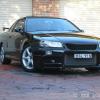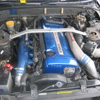How Much Knock Is Safe? What Temperature Is Your Oil And Water At With Oil Cooler?
Announcements
-
Similar Content
-
Latest Posts
-
By feartherb26 · Posted
If you take the top half of the intake off you can unbolt the flap off the shaft and leave the shaft in there blocking the hole. Then you can remove the little vacuum canister off from under the manifold and get a spare vacuum line to run to the ECU. I can take some photos of it later. Probably best to get the vacuum source to the ECU sorted first though. Mine all worked mint with the base map from the GTT an I've pretty much let the closed loop sort the fueling and took 1 degree out of the whole timing map. -
This IS something you also have to configure in Haltech (or at least I did in the past when going from onboard-to-ECU map sensor and an external MAP sensor in haltech land).
-
By Murray_Calavera · Posted
I'm hoping it's something as simple as the ECU is looking for an external MAP sensor, but he is trying to use the onboard MAP sensor. -
By Murray_Calavera · Posted
You won't need to do that if your happy to learn to tune it yourself. You 100% do not need to do that. It is not part of the learning process. It's not like driving on track and 'finding the limit by stepping over the limit'. You should not ever accidently blow up an engine and you should have setup the ECU's engine protection to save you from yourself while you are learning anyway. Plenty of us have tuned their own cars, myself included. We still come here for advice/guidance/new ideas etc. What have you been doing so far to learn how to tune? -
Put the ECU's MAP line in your mouth. Blow as hard as you can. You should be able to see about 10 kPa, maybe 15 kPa positive pressure. Suck on it. You should be able to generate a decent vacuum to about the same level also. Note that this is only ~2 psi either way. If the MAP is reading -5 psi all the time, ignition on, engine running or not, driving around or not, then it is severely f**ked. Also, you SHOULD NOT BE DRIVING IT WITHOUT A LOAD REFERENCE. You will break the engine. Badly.
-




Recommended Posts
Create an account or sign in to comment
You need to be a member in order to leave a comment
Create an account
Sign up for a new account in our community. It's easy!
Register a new accountSign in
Already have an account? Sign in here.
Sign In Now